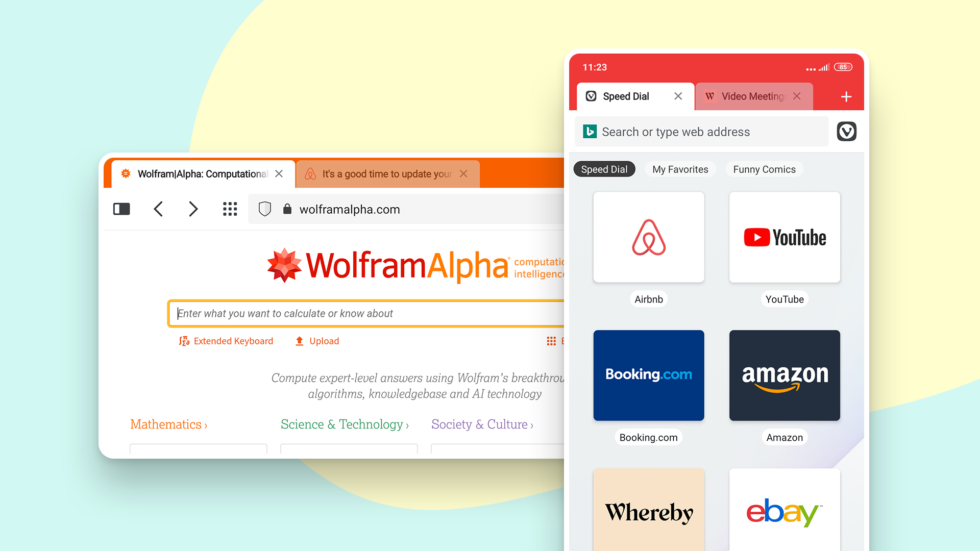
OSLO, Norway – June 9th, 2020: Vivaldi released a new update to its browser on Android. Launched in April, Vivaldi on Android received international acclaim for its unique features such as real tabs, sync, note-taking functionality, optimized landscape and portrait mode browsing, built-in Tracker and Ad blocker, and more.
Available on Android 5 or higher, it’s also compatible with tablets and Chromebooks.
“What stands out in Vivaldi is its intuitive feature set and useful built-in tools that no other browser offers. And we are proud of the unique user experience we bring on Android,” Vivaldi CEO Jon von Tetzchner says. “The successful launch in April motivated us to fine-tune the browser into an even better version today.”
Vivaldi sports a sophisticated user interface keeping key functionality – go-to tools such as Panels, Speed Dials, Tab Switcher, Notes, and Capture – within easy reach.
Syncing browsing data on-the-go is another distinguishing feature.
Vivaldi is also more private. Instead of relying on WebView, Google’s Android component, Vivaldi is built with the Vivaldi-modified Chromium source code, the same as its desktop browser. This means that Vivaldi isn’t sending the same information to Google as Chrome. Harvesting user data and user profiling isn’t Vivaldi’s business model.
Get more of Vivaldi in its new version
Building on its unique features, in the new version Vivaldi has rounded a few rough edges, squashed some bugs, and polished the browser with under the hood improvements.
Due to popular demand, it includes a dark mode for web content – in addition to the light/ dark themes available for the user interface. Preferred modes can be picked in Themes in Vivaldi Settings.
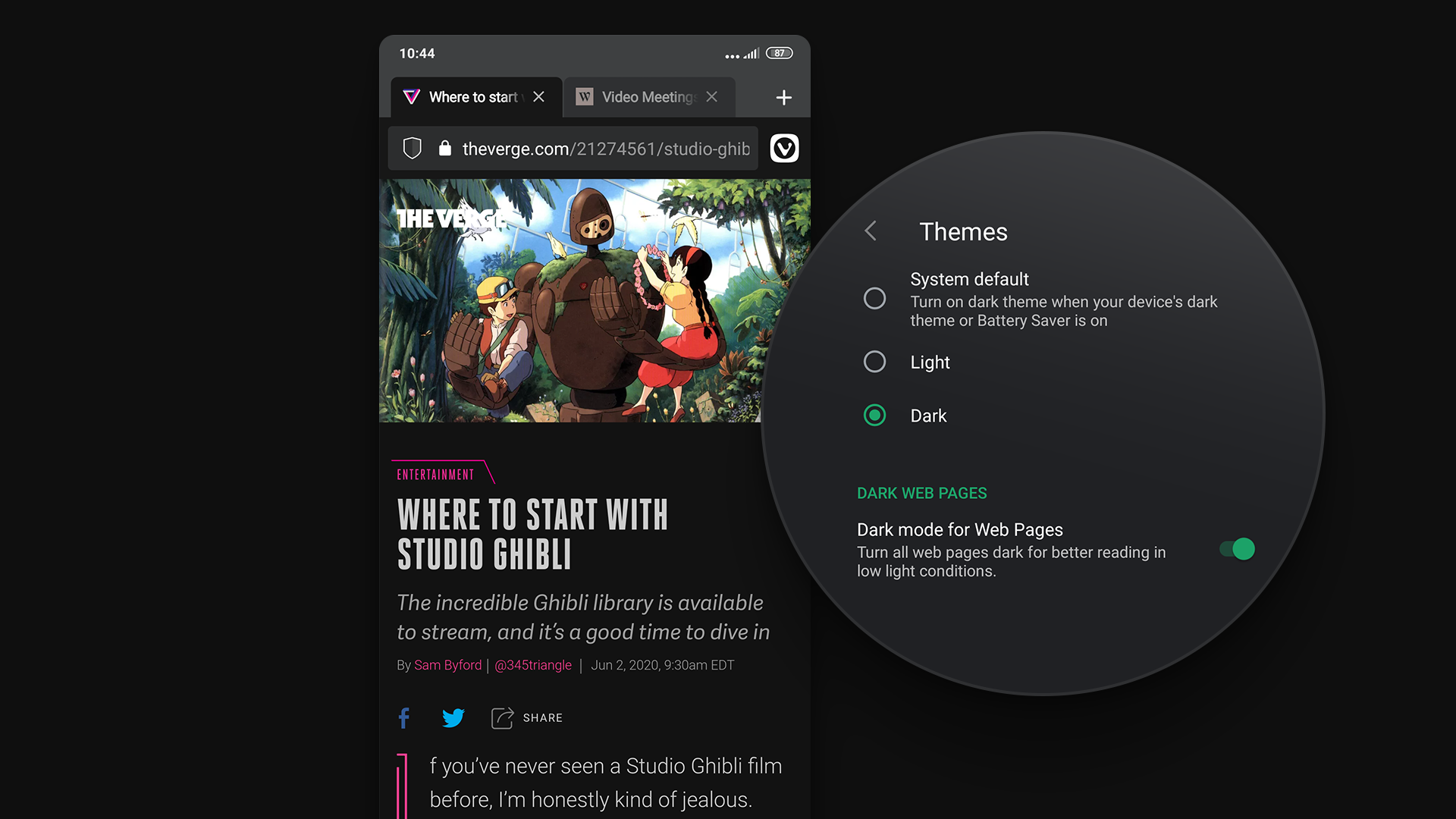
Vivaldi’s features include:
Tab Strip: Real tabs (desktop-style tabs) are integrated by default in the user interface as a Tab Strip. It addresses the perennial problem of out-of-control tabs. Users can view open tabs and switch between tabs easily.
Tab Switcher: A gateway to Vivaldi’s unique tab interface, this functionality gives the ability to find open, private, recently closed, or even synced tabs with an easy swipe.
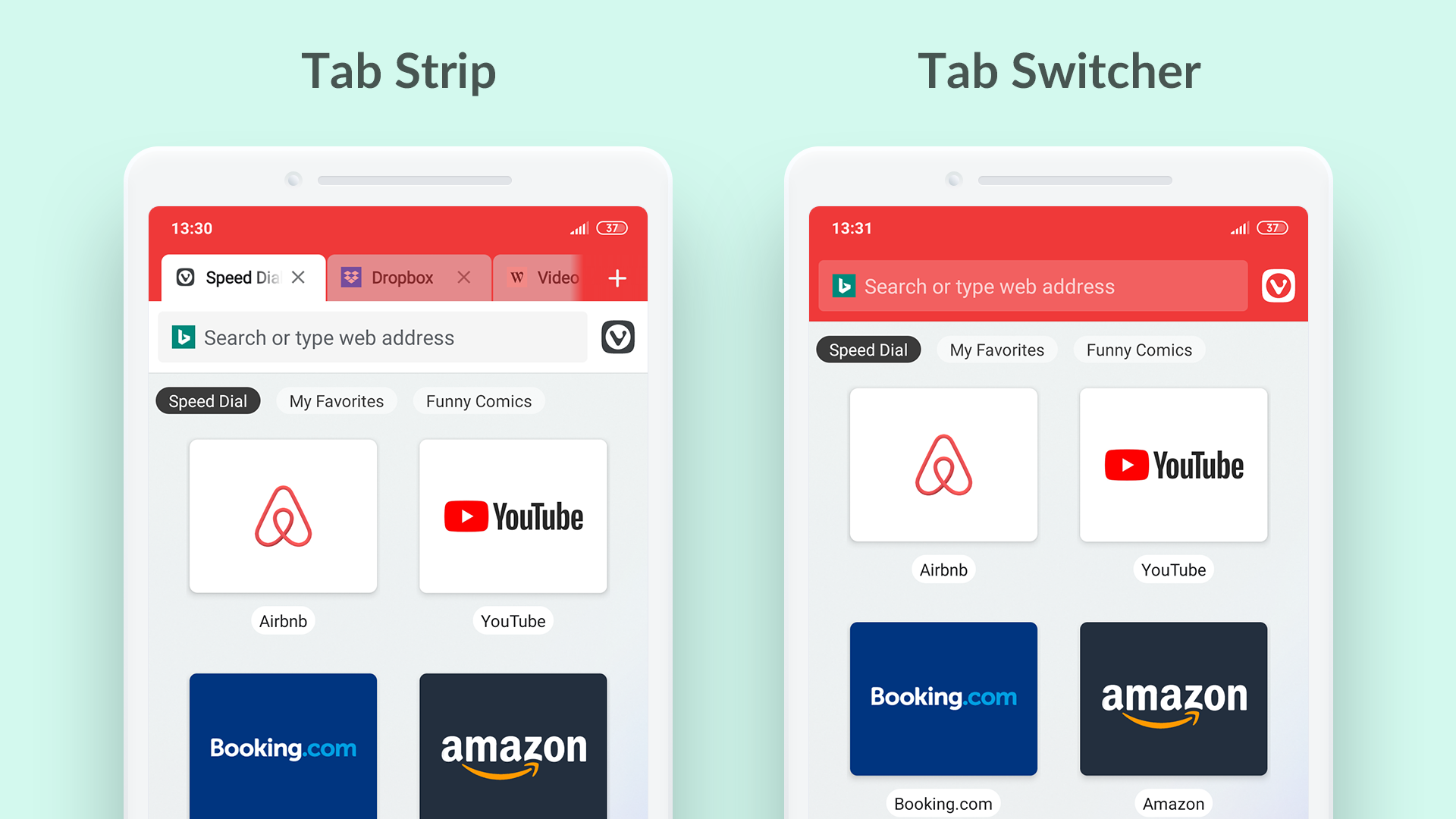
Built-in Ad and Tracker blocker: Allows browsing with speed, uninterrupted by unwanted ads. Off by default, this feature can be easily enabled for sites through the shield icon at the left end of the Address field or globally in the Settings.
![]()
Built-in Notes: Unique functionality for jotting things down or making lists within the app. Syncable on different installations of Vivaldi, Notes is accessible with a tap on the Panels button at the bottom left of the screen and then on the Notes icon at the top.
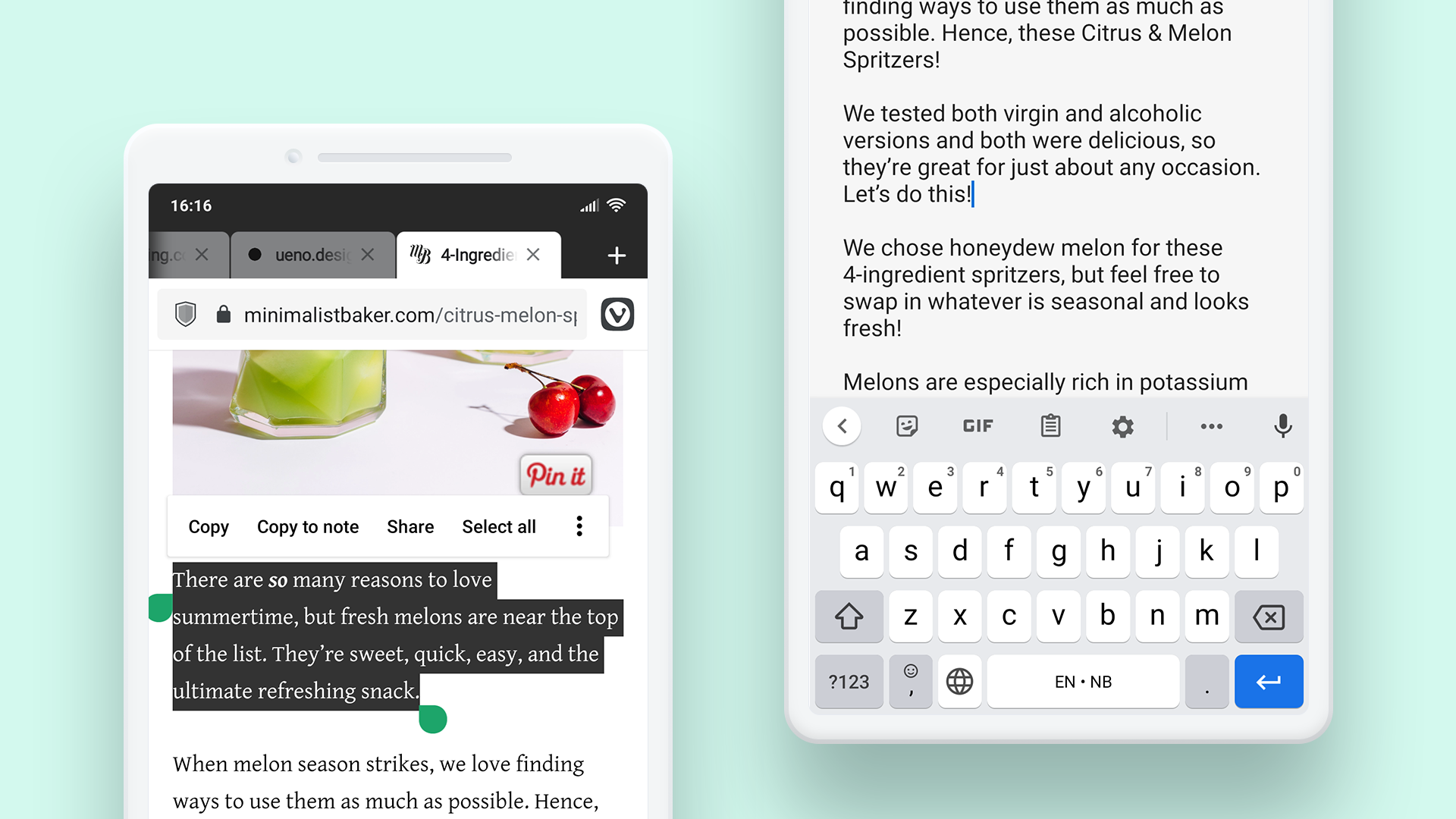
Speed Dials: A collection of favorite websites and bookmarks grouped in customizable folders that can be accessed whenever a new tab or the browser is launched.
Bookmark Manager: Allows to organize websites in a list of bookmarked sites, edit descriptions and nicknames for those sites. The nicknames can be used to quickly access bookmarked sites from the Address bar.
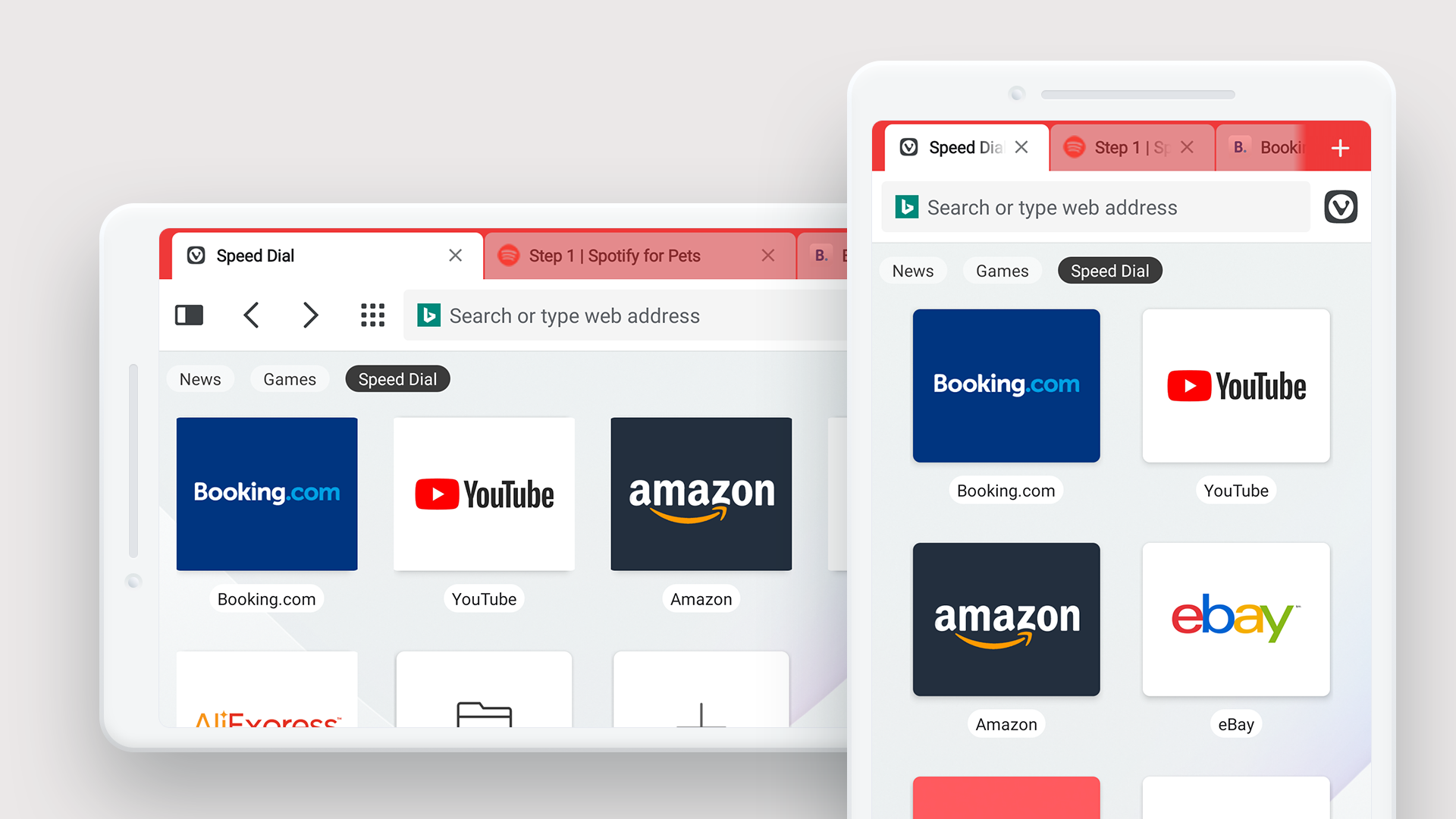
Capture: Unlike other browsers, Vivaldi has full-page screenshot capture functionality. Tapping the ‘V’ icon at the top of the screen and selecting ‘Capture page’ saves a full-page screenshot or, if preferred, a selection of the area visible on the screen.
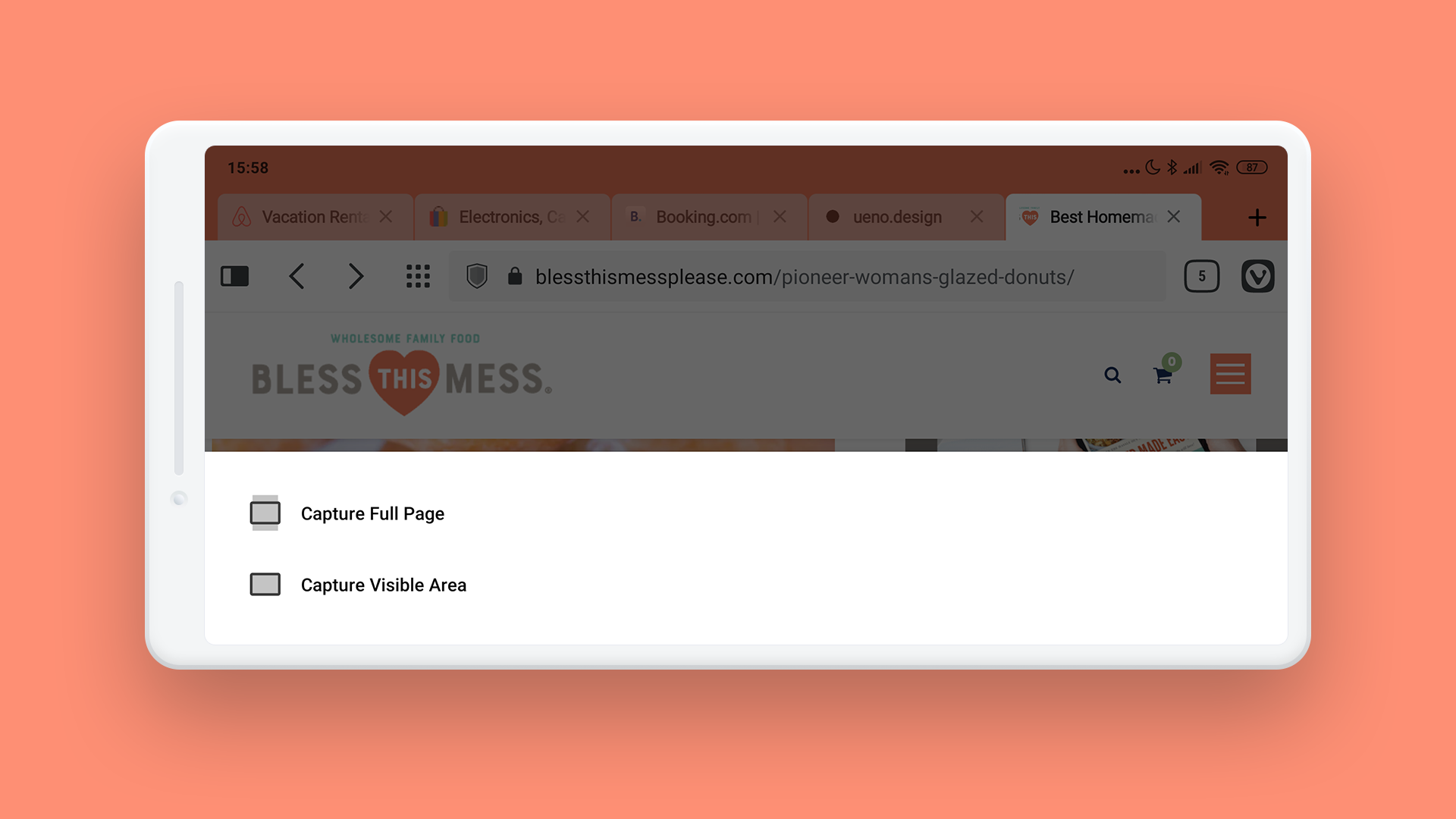
Search engine nicknames: Switching between search engines by typing the first letter of the search engine in the address bar. Regardless of the default search engine (eight popular options are supported in Vivaldi), this is a fast way to perform a search with a different search engine.
History buttons – back and forward: Useful functionality for looking through webpages. Long-pressing on the history buttons helps to go further back or forward than just one page.
Matching user interface color : The user interface matches the colors of the active current website – visually pleasing and useful at the same time.
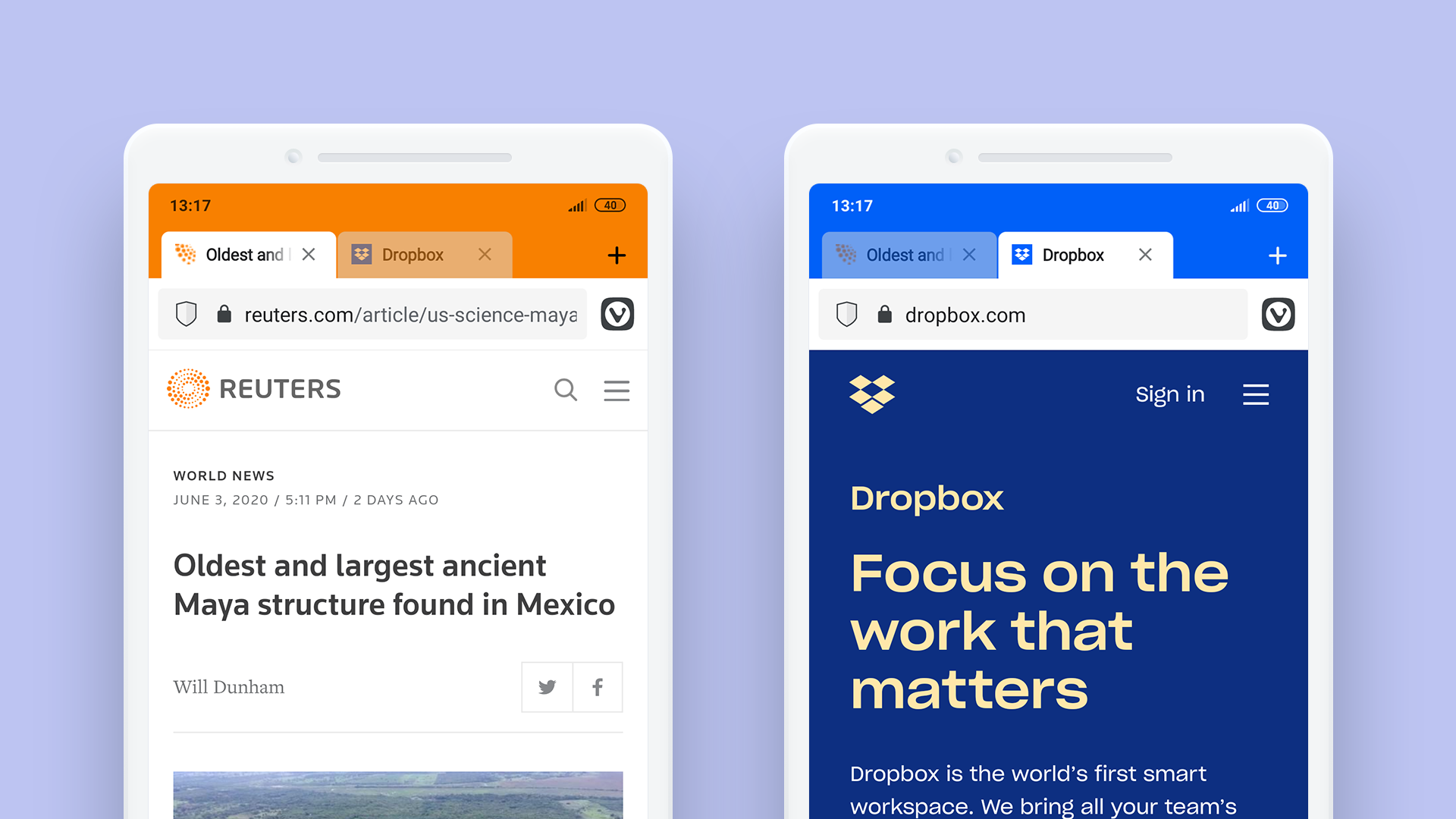
Vivaldi Sync: Sync capabilities for synchronizing data between different installations of Vivaldi on desktop and Android. Instead of using Google’s servers, data is stored on Vivaldi’s own secure servers hosted in Iceland. Synced data is protected with end-to-end encryption and never shared with Vivaldi.
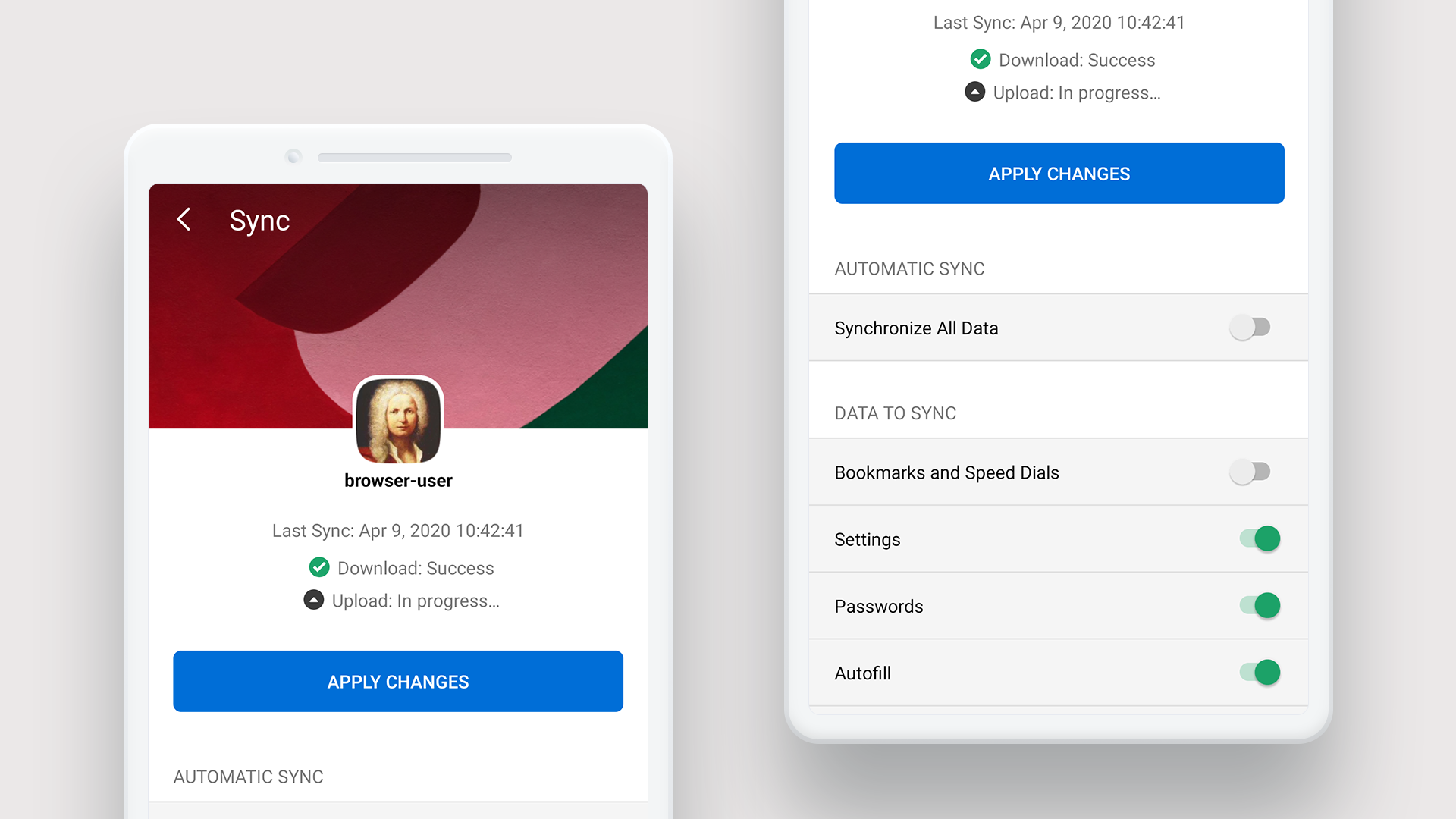
Finally, a browser that takes screen space seriously
Vivaldi’s optimization of screen space is noteworthy. In landscape mode, Vivaldi looks very different from portrait mode. It comes with greater width with the toolbar removed and buttons placed at the top – enhancing usability.
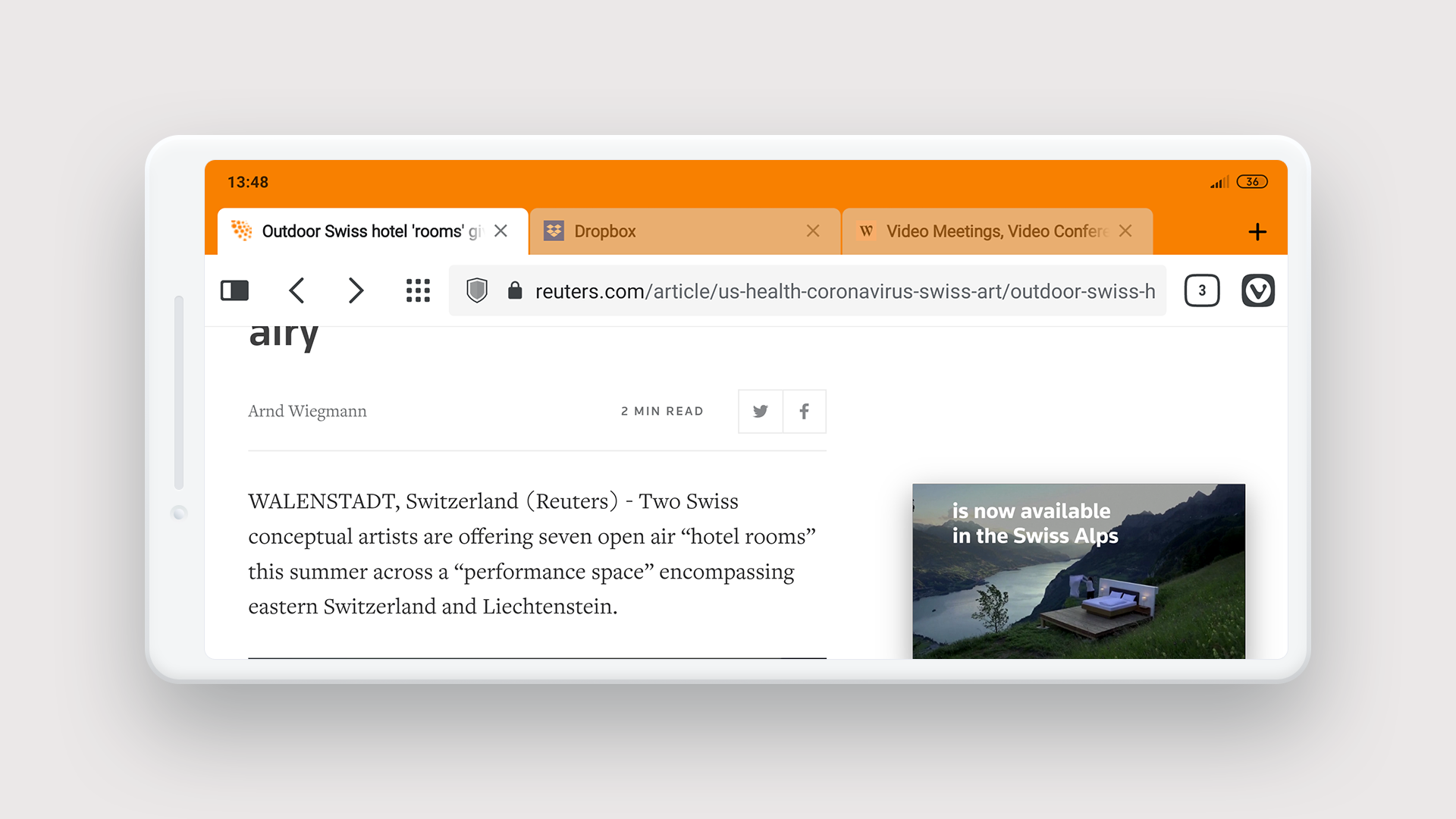
In landscape mode, browsing with the option “Always Show Desktop Site” works well. For that, all the vertical space is needed and that’s what Vivaldi gives its users
The unique Tab Strip at the top works nicely in landscape mode improving usability significantly. It can be disabled in Vivaldi Settings for more screen space.
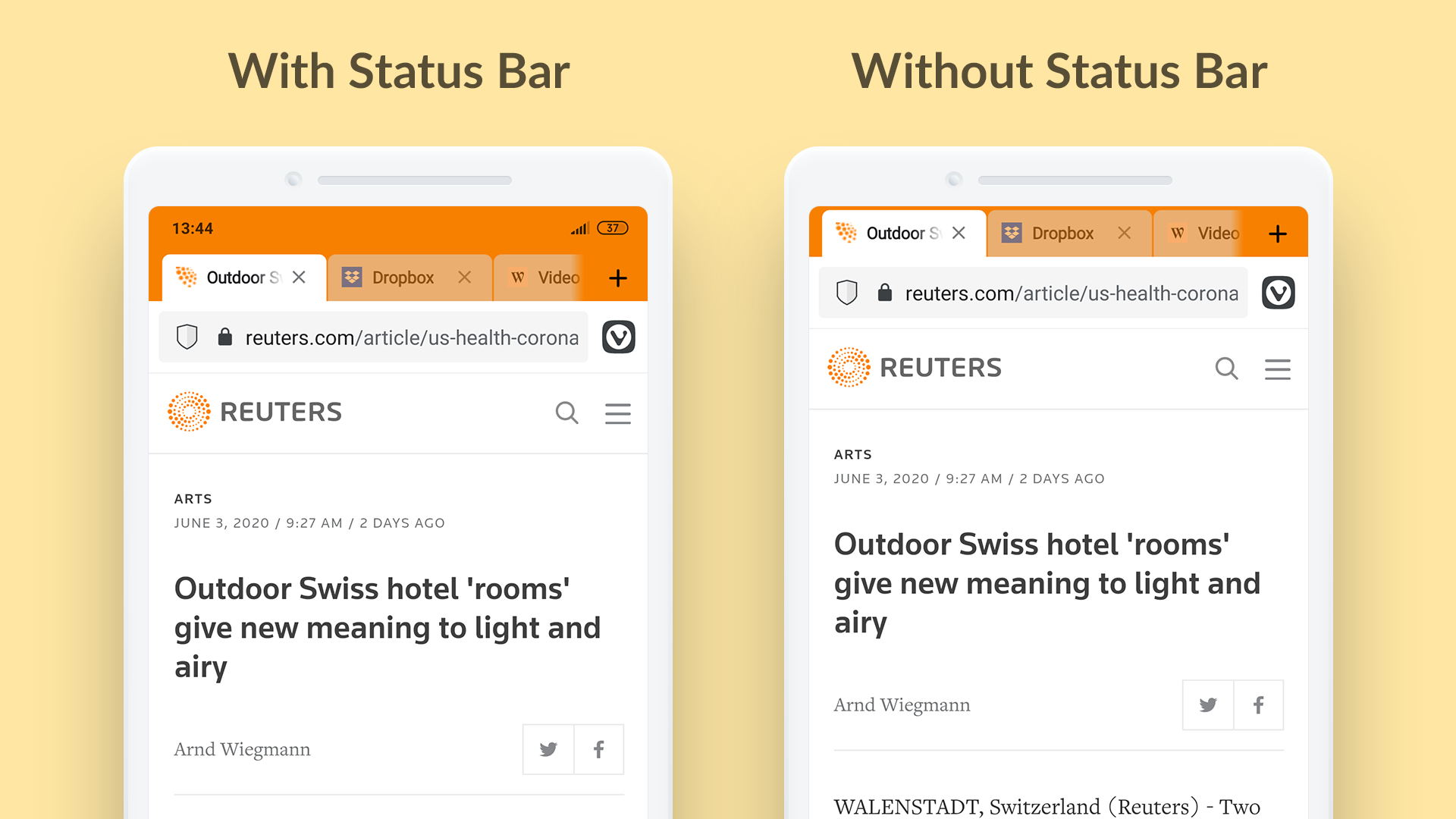
The browser doesn’t want users to waste space, especially on small screens. With an option to disable the System Status Bar in Vivaldi Settings, users can view content better in a bigger browser window. And not seeing unread messages and notifications helps users to focus.
